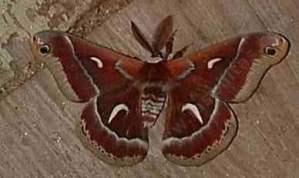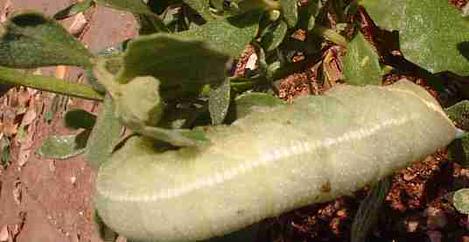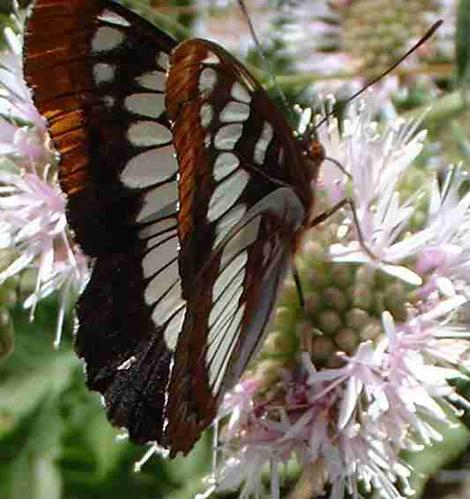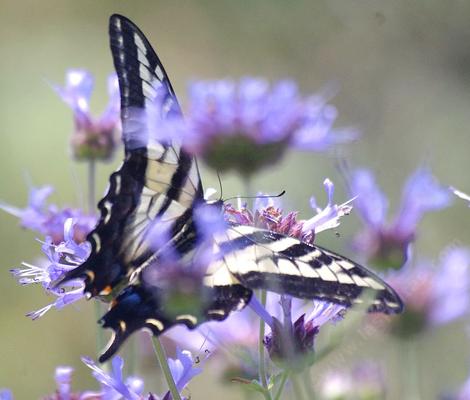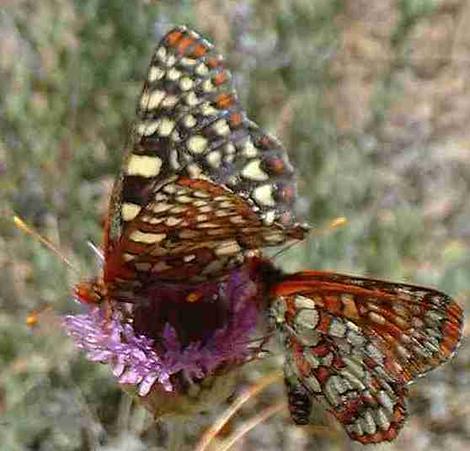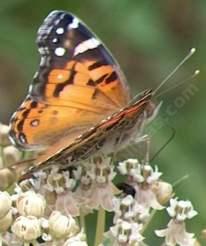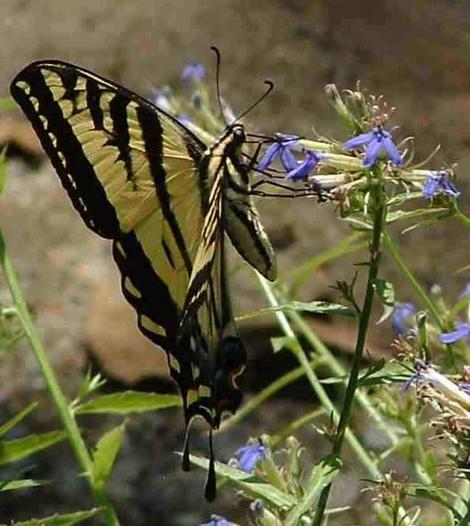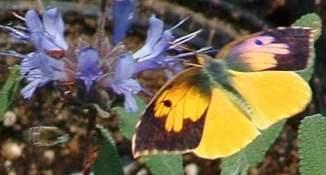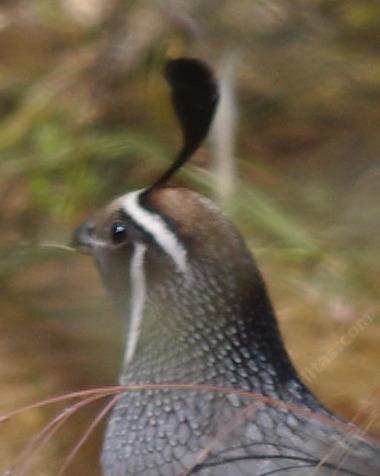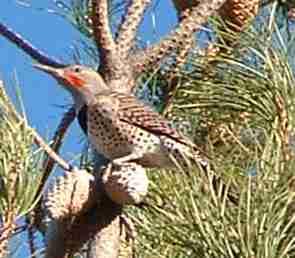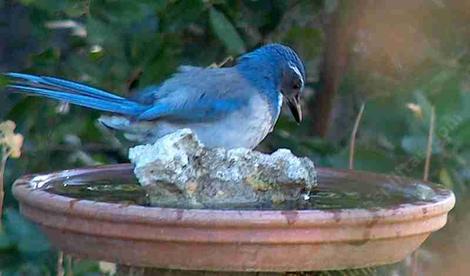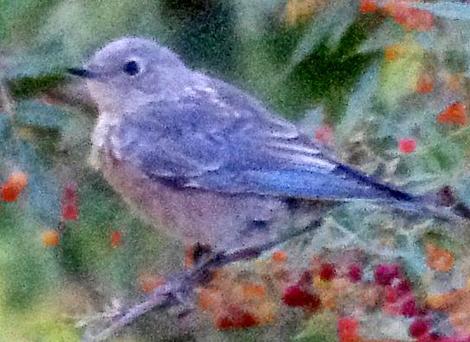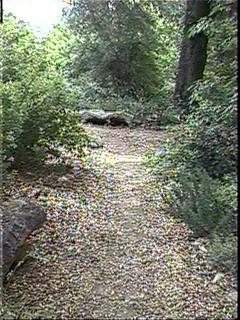Woodpeckers, Bluebirds, Monarchs, Swallowtails and other Birds or Butterflies
This page was created from notes from a Cuesta College Extended Education Class that Celeste taught in 1997.
-Life in a Central Coast California Garden
Butterflies are also known as Lepidoptera, or Scaly wing, as their wings are covered with variously colored scales
How to Tell Butterflies from Moths-
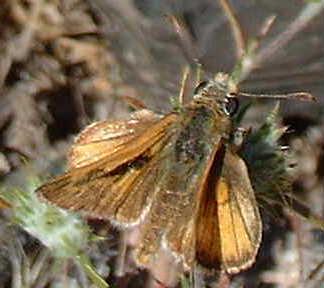
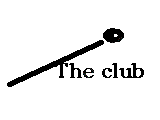
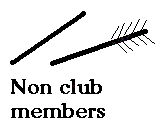
Moths have different kinds of antenna- feathery, etc., but NOT clubbed.
Butterflies and moths go through several life stages:
egg (tiny)larva (caterpillar),
pupa (looks like a creature from Alien),
adult (everyone's favorite stage)
A caterpillar can be all sizes, colors and shapes.
To attract butterflies to your garden you need a few essentials.
Food for larvae (most important) is critical! Larva of butterflies eat by chewing leaves, buds, and flowers of certain plants and they are very particular about what kinds of plants they eat!
Food for butterflies is helpful also, but adult butterflies are completely different, only sipping nectar from flowers of many different kinds of plants. They are not very particular.
Water is useful for butterflies that sip mud (for nutrients and liquid water). A tiny pond (or a large pond) will work, with muddy, shallow edges.
Sun, shade- A garden needs to have areas of sun and shade, and filtered light. Many butterflies prefer full sun in open areas. At the same time, they rest in shade (of foliage). Also, some butterflies that live in riparian areas live and eat in dappled shade (of deciduous shrubs and trees).
Shelter, protection from wind- Butterflies seem to prefer feeding in areas that are not windy. So, a sunny , flowery area surrounded by shrubs and trees for wind protection is great.
Watering your native garden.
NOTE: If your garden is watered constantly, and is always wet, you will not attract very many California butterflies. Your garden needs to be watered as nature waters, with a little help.For example, many areas of California receive rainfall from November through April (this is when you can water extra! If rainfall is not forthcoming) In summer there is fog drip in coastal areas and some rain showers in the northern portions of California. So you do likewise. For most areas, sprinkle the foliage and mulch in summer every so often (if needed, once a week for young plants and once a month for more established plants). These conditions are what most California butterflies prefer. In DESERT areas, most rainfall occurs in spring (this is when you can water extra! If the rainfall is not cooperating). In summer, to simulate summer showers you can spritz plants once in a while.
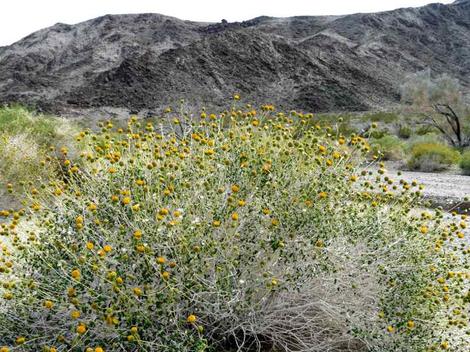
Showy and/or Most Common Butterflies You May Encounter
More butterfly info and pictures
Monarch (Danaus plexippus)- Adults move south in fall, to Pacific Grove, Pismo Beach, Morro Bay, and other coastal areas. Larval Food- Asclepias spp., or Milkweed. Formerly lived in native pines, but now also live in ornamental trees planted along the coast (many eucalyptus).
Crown Fritillary, Zerene Fritillary-(Speyeria coronis, S. zerene) brownish-orange butterflies with silver spots in rows on underside (Crown); silver spots placed randomly on underside (Zerene)- Larval Food- Violets- Viola spp. Viola pedunculata, etc.
Common Checkerspot (Occidryas chalcedona) black and white checkered appearance, very unique- Larval Food Plant- Monkeyflower, (Mimulus), Bee Plant, Scrophularia spp., Penstemon and Monardella.
California Tortoise Shell-(Nymphalis californica) medium-sized butterfly, orange and black, with wing edges appearing raggedy. Larval Food Plant- Ceanothus thyrsiflorus, Ceanothus cuneatus, California Lilacs
Ladies- medium-sized, orange and black butterflies, very similar to each other in coloration
Painted Lady (Vanessa cardui)- white bar on forewings, Larval Food Plant- Thistle (Cirsium spp.), Amsinckia (fiddleneck), Malva spp.,Mallow, Urtica spp.(Stinging Nettle)
American Painted Lady (Vanessa virginiensis)- Larval Food Plant- Gnaphalium, Anaphalis (Both Pearly Everlasting)
West coast Lady (Vanessa annabella)-Orange bar on forewings Larval Food Plant- Malva spp., Althea rosea (Hollyhock), California Checker Mallow (Sidalcea spp. ) and Desert Mallow (Spheralcia spp.), Stinging Nettle (Urtica spp.)
Peacock Butterfly (Junonia coenia)- Brown butterfly with large, beautiful peacock spots on their wings (one per wing section) Larval Food Plant- Plantain (Plantago major,) Monkeyflower (Mimulus spp). Snapdragon (Antirrhinum species.)
California Sister (Adelpha bredowii californica)- These butterflies have a very distinctive coloration on their undersides (colored with blue, brown, pale orange, white) as compared to their upperside (black, orange, white); you think you are seeing two different butterflies. They are seen flying in treetops, very swift, do not linger in one place very long, and usually only sip mud, not flower nectar. Larval Food Plant-Canyon Live Oak, (Quercus chrysolepis,) Coast Live Oak, (Quercus agrifolia.) (They also set in tree and stick tongue out at you when you try to photograph them.)
Swallowtail- very large, showy yellow and black butterflies
Anise Swallowtail (Papilio zelicaon)-Larval Food Plant- Foeniculum vulgare (Fennel), Wild carrot (Lomatium spp)
Western Tiger Swallowtail (Papilio rutulus)- Larval Food Plant- Cottonwood, (Populus fremontii, Populus trichocarpa) willow (Salix spp.), White alder (Alnus rhombifolia), Sycamore (Platanus racemosa), apple (Malus sylvestris).
Pale Swallowtail (Papilio eurymedon)- Larval Food Plant-Coffeeberry, (Rhamnus californica), Redberry (Rhamnus ilicifolia and R. crocea), Wild Lilac (Ceanothus cuneatus), Holly leaf Cherry (Prunus ilicifolia)
Common White (Pontia protodice) - Larval Food Plant- Mustard family: Desert Alysum, (Lepedium fremontii,;) Tansy Mustard, (Descurainea species); Rock Cress, ( Arabis species).
Sara Orange Tip (Anthocharis sara)-small white butterfly with orange spot at tip of wing- Larval Food Plant- Mustard Family ( Tansy Mustard, (Descurainea spp.); Lace Pod, Thysanocarpus species; Rock Cress, Arabis species.)
Dog Face -yellow, Medium- sized butterfly with a side- view profile of a dog's face upon its wings (male); all yellow (female)- Larval Food Plant- False Indigo, Amorpha californica. Their favorite nectar plants seem to be Salvia 'Pozo Blue' and Monardellas.
Hairstreaks (subfamilies Theclinae and Eumaeinae) - small butterflies of different colors, hindwings usually, lobed, and many have a tiny, hairlike "tail"- Larval Food Plant- Golden bush (Haplopappus linearifolius), California Juniper, (Juniperus californica), Mountain Mahogany, (Cercocarpus betuloides), Blue Oak, (Quercus douglasii), Willow (Salix spp.), Common mistletoe, (Phoradendron flavescens)
Blues (subfamily Polyommatinae)- small butterflies, many are blue - Larval Food Plant- Bush Lupines (Lupinus albifrons, for example). Deer Weed, (Lotus scoparius), Clover, Trifolium spp., vetch (Vicia spp.), other Legume plants, and Buckwheat, (Eriogonum spp).
Skippers (Family Hesperiidae)- small to medium-sized butterflies with chunky bodies, of dull colors, browns, tawnys, etc.- Larval Food Plant- grass family plants, Poaceae, Poa secunda ssp. secunda (One-sided blue grass), Oat Grass (Danthonia californica), and many more.
Moths that look similar to butterflies that you may see flying in daylight hours-
Hawkmoths- chunky- bodied moths with striped bodies that appear bee-like and wings that move swiftly as a hummingbird (also called hummingbird moths) love to visit evening primrose, (Oenothera californica) flowers for nectar.
Then there's beeflies...
Favorite Flowers for Adult Butterflies
There are so many native species and cultivated species that I will list those that seem to be most popular with butterflies and easiest to grow in our central California area:
Daisy family (Asteraceae) and mint family (Lamiaceae) flowers seem to be the ones preferred over all others in most cases.
Examples of Lamiaceae- Monardella sp.(coyote mint), Stachys sp. (Hedge Nettle), Salvia sp. (Sage), Trichostema lanatum (woolly blue curls) Agastache urticifolia (California Licorice Mint)
Examples of Asteraceae- Encelia californica (Encelia), Helianthus gracilentus (Bush Sunflower), Erigeron glaucus (Seaside Daisy), Haplopappus linearifolius (Golden Bush), Isocoma menziesii (Golden Bush), Red Thistle (Cirsium proteanum)
Other butterfly plants include:
Carpenteria californica- Bush Anemone
Gilia capitata- Globe Gilia
Dichelostemma capitatum- Wild Hyacinth
Eriodictyon californicum and other Eriodictyon species- Yerba Santa
Philadelphus lewisii- California Mock Orange
Note: Using insecticides, will sabotage your plan to attract butterflies to your garden. If you don't spray, those ugly caterpillars will metamorphose into lovely butterflies!
Favorite Flowers for California Birds
California Quail (Callipepla californica) - primary food- legume seeds and other seeds, (Lupines, Deerweed, Clovers, ), also eats green leaves, stems, grasshoppers, katydids (arthropods), grains, fruits.
Does not prefer weedy, grassy areas, but likes low herbaceous, native vegetation mixed with low shrubs, medium shrubs and trees.(They will also feed in dry, mowed, areas with a mixture of native and non-native vegetation of herbs, forbs and grasses.
Hummingbird- Black-Chinned (Archilochus alexandri), Anna's (Calypte anna)(overwinters), Allen's (Selasphorus sasin), - Food- nectar from flowers, also, insects, spiders. Loves flowers of fuchsia- flowering gooseberry (Ribes speciosum), other gooseberries and currants, Manzanitas (Arctostaphylos species), California Fuchsia (Epilobium canum, Zauschneria californica), Scarlet Bugler, (Penstemon centranthifolius), Cardinal Flower, (Lobelia cardinalis), Scarlet Monkeyflower (Mimulus cardinalis), and other red, tubular flowers. Seems to enjoy picking insects from Chaparral Mallow, (Malacothamnus fasciculatus).
Woodpeckers- need standing, diseased, or dead trees (snags) where the wood is soft enough to excavate a nest hole. (Some politicians should wear a hat!)
Acorn Woodpecker (Melanerpes formicivorus) is a communal species, aunties help to raise young ones- Food- acorns, flying insects, and tree sap in spring. Excavates nests in decayed, living pine trees or dead, standing trees (snags). Stores acorns in individually drilled holes in bark of trees. Dependent on Oaks, especially large, for their existence; primarily Coast Live Oak, (Quercus agrifolia); Blue Oak, (Q. douglasii), Black Oak (Q. kelloggii), Valley Oak, (Q. lobata).
Nuttall's Woodpecker (Picoides nuttallii) has a black and white striped back- Food- Primarily insects (mostly beetles), fruits, nuts, tree sap. These woodpeckers live in riparian areas where Sycamore, (Platanus racemosa), cottonwood, (Populus fremontii) and willow (Salix spp.) live, and also in areas with oaks.
Downy Woodpecker (P. pubescens) is very similar to Hairy Woodpecker, black, with white back, red bar on head except bill is larger. Food- beetles, ants, caterpillars mostly; also fruits, seeds-lives in streamside areas, and adjacent woodlands.
Hairy Woodpecker (Picoides villosus) eats insects (ants, beetles, grasshoppers, caterpillars, spiders, aphids), acorns, dogwood fruits, and pine nuts (a very nutritious and varied diet!). Lives in stream side habitats where Sycamore, (Platanus racemosa), cottonwood, (Populus fremontii) and willow (Salix spp.) grow, and adjacent areas of conifers. These birds provide a natural control for bark beetles because they eat the baby beetles (larvae).
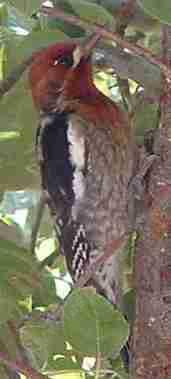
Black Phoebe (Sayornis nigricans)- A slender black bird with black breast, the phoebe lives in stream side habitats, and flies over these areas, catching insects in mid-air. When perched, he/she distinctively moves tail.
(Phoebes and swallows are excellent replacements for pesticides in gardens, and are fun to watch.)
Swallows (family Hirundinidae)- Food- 80% of diet consists of insects caught in mid-air. Swallows are a means of excellent natural insect control.
Scrub Jay (Aphelocoma coerulescens)- Omnivorous- acorns, fruits, insects, bird eggs,- lives in coastal scrub, chaparral and oak woodland. Major helper in planting acorns for the next generation of oaks. Thick, grassy (alien grasses ) areas under oaks slow the scrub jay down, compete with oaks, replace the mulch layer so essential to the nutrition requirements of the oak. Remove those alien grasses (pulling by hand or with herbicides, NOT with a hulahoe or a tiller, because you want minimum soil disturbance)
Plain Titmouse ( Parus inornatus)- Associated with oak trees- Food- insects, fruits, acorns. Picks insects off leaves, twigs, trunks of trees and shrubs. Bushtits are really innocents, I've never seen them be aggressive or mean to any other animal, except aphids, moths and small insects.
Bushtit (Psaltriparus minimus)- This tiny grayish, blackish bird lives in coastal sage scrub, oak woodland, chaparral, towns, and suburban areas. Food is mostly insects and spiders; and picks insects off foliage, and twigs of trees and shrubs. They especially like Mountain mahogany, to forage in. In late summer and fall bushtits can be seen traveling in little groups of birds, chattering and twittering and moving quickly (I have seen on average, groups of 10-20 birds)
White-breasted Nuthatch ( Sitta carolinensis)- Eats mostly insects and spiders by picking them off the trunk and large branches of trees, live or dead standing; also acorns during the off season. Needs large live and dead trees for survival. Nuthatches live in oak/pine woodlands. If you see a funny, little bird moving up and around a tree trunk in a spiral fashion, with little jerky movements, that is a nuthatch.
Wrens: Rock Wren (Salpinctes obsoletus) rocky hillsides, Bewick's Wren (Thryomanes bewickii) all habitats, House Wren (Troglodytes aedon) all habitats in spring & summer - Lives in areas with brushy understory: chaparral and streamside thickets, woodland with dense understory, etc. forages on rocks, logs, shrubs, perennials for insects and spiders mostly. Wrens love to hide in thick brush
Western Bluebird (Sialia mexicana)- Is seen mostly in open woodlands- Needs an area with at least a few trees. Sits on a low perch, flys out to catch insects (grasshoppers, caterpillars, beetles, ants), on the ground; will also catch bugs on the wing. They like Mahonia nevenii and Elderberries. Benefits greatly from nestboxes. For more on Bluebirds see the bluebird page.
Swainson's Thrush (Catharus ustulatus)- see in summer in our area. Another insect eater! Great insect control for the garden. Needs dense understory in a woodland or riparian area for cover. Eats mostly insects and spiders by searching the mulch, and picking from bushes.
Hermit Thrush (C. guttatus)- You will observe this thrush in winter in areas with dense cover of shrubs and trees. Eats insects and berries (especially poison oak) in same manner as Swainson's Thrush.
American Robin (Turdus migratorius)- Eats earthworms, snails, caterpillars, beetles, grasshoppers; eats berries, fruits, in off season. Needs water regularly; needs mud to construct nests. Searches for insects on ground. They like Toyon berries. Does well in suburban areas as moist, open, areas with trees and perennials for understory.
Mockingbird (Mimus polyglottos)- Eats insects, earthworms, snails, berries, fruits. Lives well alongside man and his habitations. Eats many ornamental fruits. Shrubs and trees needed for cover.
California Thrasher (Toxostoma redivivum)- is a brown bird with curved bill; not born for flying, awkward, does short flights from bush to bush. Lives in chaparral and riparian areas that possess dense thickets. Does not venture more than a few feet from cover. They like Mahonia nevenii and Ribes aureum gracillimum. Eats insects, worms, etc., some fruits and acorns. Rakes mulch and ground with curved bill to extract food.
Phainopepla (Phainopepla nitens)- is a slender black bird with top-knot. Eats mostly small berries, some insects. Most important: berries of mistletoe, Elderberry (Sambucus mexicana), Grape (Vitis californica, V. girdiana), Coffeeberry (Rhamnus californica), poison-oak (Toxicodendron diversilobum). Needs trees and large shrubs for cover, medium density.
California Towhee (Pipilo crissalis) is a plain, brown bird, Spotted Towhee (Rufous-sided towhee), Pipilo maculatus is a shade lover with red eyes, both eat insects, seeds, fruits by scratching in ground and mulch, leaf litter. California Towhee prefers open areas near brush for cover, Spotted Towhee loves more in the brush and woodland, they live together in the interface.
An Interface of native plants, mulched appropriately, some water
source(s) with openings and clumps of heavy
brush(Ceanothus, manzanitas, or in desert areas Creosote or
Atriplex) and some trees will create an excellent habitat for you and the birds. Mother nature appears mixed up, but
there's a plan there, patterns of open and closed.
Sparrows ( subfamily Emberizinae) such as Lark, Rufus-crowned, Sage, Song, Savvana, Fox, Chipping, Gold Crowned, White Crowned, etc., eat seeds of grasses and herbs, and insects and spiders. Sparrows feed on the ground and on low vegetation. They love any expensive seeds you plant!
Goldfinches (American, Carduelis tristis, Lawrence's Goldfinch, Carduelis lawrencei, and Lesser, Carduelis psaltria )- Primarily seed eaters, but eat insects at certain times of the year. Prefer thistles, fiddleneck, other daisy-like flowers.
House Finch (Carpodacus mexicanus)- Not much of an insect eater, Mostly a seed eater, and eats fruits, and buds. Lives in urban, farmland areas as well as open areas of woodlands, chaparral, streamside habitats.
To attract a variety of birds to your garden:
First, WATER, a regular source, must be available; in addition to filling their needs, it is such fun to
watch them drink and bathe.
FOOD throughout the year.
A. Insects and spiders are attracted to a variety of plants, especially ones in the daisy, carrot, poppy, evening primrose, rose, potato, and mint families, to name a few.
B. A variety of plants bearing fruits attractive to birds. Some good ones are Ribes spp., Coffeeberry, Toyon, Elderberry and, of course, Poison Oak.
C. A variety of plants bearing seeds attractive to birds.
SHELTER: Birds need cover for nesting and to rest and hide from predators. Number one on the list are Pines and oaks, then various associated and understory shrubs and trees. For coastal areas Cambria Pine (Pinus radiata), Bishop Pine (Pinus muricata), Coast Live Oak (Quercus agrifolia), Scrub Oak (Quercus berberidifolia); for inland areas Blue Oak (Q. douglasii), Valley Oak (Q. lobata), Scrub Oak, (Q. berberidifolia), Gray Pine (Pinus sabiniana); For streamside habitats or wet areas, Black or Fremont cottonwood (Populus balsamifera ssp trichocarpa, P. fremontii ssp fremontii), sycamore, willow, alder.
Open areas combined with dense brushy understory areas, dotted with large trees, and with a water feature, will attract the greatest variety of birds.
Plants with seeds attractive to birds
Thistle
and other daisy family members, Legumes, Mint family, Grass family, Pines,
in other words almost all native plants.
Plants with fruits attractive to birds
Oaks
(acorns) fir the quail and larger birds. Elderberry,
poison oak and other small fruits are
favorites of the Western
Bluebird. It's ironic to see a hillside with
the poison oak completely removed, and bluebird houses everywhere.
Blackberries
are liked by raccoons,
bear, foxes, etc.
Plants that attract the most insects
Practically any plant in the daisy family. Examples include: daisy, zinnia, encelia, sunflower, aster, thistle, butterweed, dandelion, tidy-tips, pincushion flower (chaenactis), golden bush, golden yarrow, coreopsis, coyote brush, etc., etc. and Monardella, sage, hedge nettle, California licorice mint (agastache), Malacothamnus fasciculatus, Footsteps of spring, Lomatium, to name a few. Butterflies need the nectar souses to be extended as long as they are about. If there's a butterfly there, make sure there's a flower there.
Note: If you can use the "natural" insecticides (birds, mammals, reptiles and amphibians) your garden will be better off in the long run and you will attract more of a variety of birds.
Also: Cats are a real threat to the birds, small mammals, reptiles, and some of the butterflies, well-fed or not, according to studies undertaken in gardens in the United States.
Remember: All you have to do is provide the plants, the water, and the ambiance, and the birds and butterflies will just start showing up.
